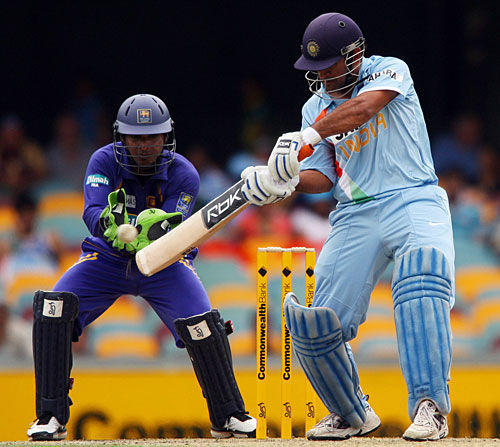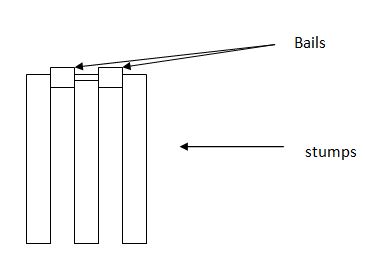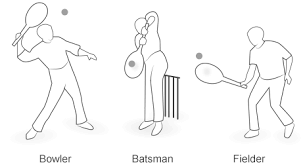Introduction
Cricket is a sport that involves two teams, each with eleven players. A cricket game can last from a short time as a few hours to as many as several days. It is claimed to be one of the oldest games worldwide, having begun back in the 16th Century (Zingari, 2014). The once children’s game graduated to an adult game in the 17th Century. It also drew the attention of gamblers in the early years of 1660, leading to the Gaming Act legislation in Britain. The English people took cricket to North America during the colonial period (Purdue, 2009).
The game was spread to the rest of the world in the 18th Century. Cricket is one of the most-watched games in today’s world. The International Cricket Conference (ICC) is the body that oversees cricket globally. The latest edition of cricket is the Twenty20, which originated in England.
According to the Cricket Romania Council (2009), cricket is played by all groups of people, including children, teenagers, and adults, comprising both men and women. Cricket has six major components; batting, bowling, fielding, catching, wicket keeping, and scoring run. During the play, team A has to bat first and make efforts to have many runs. The opponents do bowling, as well as fielding in an attempt to prevent the other team from gain points through runs.
The teams will swap the moment team A is out, following the set rules. This paper will look into the details of the game of cricket in terms of the materials needed to play the game, the rules and aim of the game, the effects of the game on different age groups, the various benefits of cricket, and the comparison of cricket to other games like baseball, soccer, rugby, and volleyball.
Materials needed to Play-Cricket
One of the materials required for this game is the cricket ball (Jenkins, 2003). This is usually a hard and durable ball that is covered with leather. The weight of the ball is about 156g to 163g while its circumference ranges from 224 to 229mm. Although the ball was traditionally made in red color, today’s cricket ball is mainly white to improve visibility, especially during the night under artificial light.


A cricket bat is also needed. The bat is a strong bar with one flat side that is called a blade, while the opposite side has a hump. This blade, whose maximum width is 4.25 inches, is attached to a cane handle that is durable (Jenkins, 2003). The length of the whole bat is 38 inches (Purdue, 2009). In a cricket game, there are normally two wickets that are made of wood.
Three stumps with bails at the top make the wickets. The stumps have a height of 32 inches, with spikes on the lower side for securing the wicket. The players protect themselves by wearing various protective items like a helmet and knee pads. The set of protective clothing is commonly worn by the batsman to prevent him from injury caused by constant hits by the ball.
It is a norm to see cricket players wearing leather shoes that are fitted with spikes for a better grip on the ground (Hickey, 2006). Other general clothing that is common among cricket players includes long pants, long or short-sleeved shirt, and a cap to protect against the scorching sun.
Cricket Laws
There are 42 general laws that oversee cricket anywhere in the globe. Hickey (2006) explains the 42 laws, as illustrated in the following sentences. Law 1 gives the exact number of the required players on each side, as well as the captain’s responsibilities. Law 2 describes runners and substitutes and the exact situations when they are to be used. Law number 3 explains how an umpire should be appointed, in addition to how the umpires should relay the signal to the players during a game.
Law 4 provides the functions of scorers. Law 5 explains a match ball, as well as the circumstances that can lead to the ball being changed. Law 6 elaborates more on the bat, where the bat is taken to be the blade and the hump, and the hand holding it as well. Law 7 gives the size of the cricket pitch and the authority to determine whether it is fit or not for a match. The law that describes more on wickets is law number 8. The marking of the pitch using bowling, popping, and return crease is under Law 9.
Law 10 gives details on how a pitch is to be taken care of in the event of a match. Law 11 describes the events that can lead to the covering of the pitch for its protection. Law 12 defines the innings, with Law 13 describing the ‘follow-on.’ A declaration in cricket is explained under Law 14, whereas Law 15 explains the intervals in a cricket match. Things that must take place prior and during a cricket match and the events that should happen during the final hour of a cricket match are described in Law 16.
Law 17 clearly states that no practice of batting or bowling on and around the pitch in the course of a game should take place. Law 18 explains ‘runs’ in detail. Law 19 describes the markings of the pitch boundaries and how runs can be scored by strikers hitting the cricket ball on the boundary. The procedure to follow in case the ball is lost is described under Law 20, whereas Law 21 describes how the winning team is selected, following matches that last different times. Law 22 defines the overs in cricket.

Laws 23, 24, and 25 describe when a ball becomes a ‘dead’ ball, what decision is to be made in the event a bowler gives a ‘no ball,’ and how to identify whether a ball is a ‘wide ball’ or not respectively.
A ‘bye,’ as well as a ‘leg,’ is described under Law 26, with Law 27 giving details on appeals in the game of cricket. Law 28 explains when the wicket is considered to be down, with Law 29 describing the ‘batsman’s ground’ and its importance.
Law 30 defines the bowling out of batters, whereas Law 31 stipulates that incoming strikers should be given 3 minutes for preparation in the course of a fall of the former wicket.
Laws 32, 33, 34, and 35 describe catches, events justifying handling of the ball by the batter, the circumstances in which a striker hits the cricket ball two times, and the ruling to be made when a striker hits the wickets that are behind him respectively. Law 36 describes the meaning of ‘leg before wicket,’ whereas Law 37 clearly indicates that no batters should obstruct fielders. Law 38 explains the events

Warranting the running out of a battery by the side that is fielding. Law 39 describes when batters are to be removed. Law 40 stipulates the type of clothing to be used for protective purposes and the behavior of players on the pitch. Law 41 gives the responsibilities and movements of the fielders, with Law 42 describing the fair play, as well as the roles that various players in each team have.
Aim and Objectives of the Game
According to “The aim of cricket” (2015) article, the objective of the game is to bat and bowl. The players win points by doing runs during batting. The runs are scored when the cricket ball is hit around the oval field. The objective of the opposing team is to bowl the attacking team by over arming the stumps. The batsmen are ousted if the bowling team hits the stumps or catches the ball.
If all the batsmen are removed, then the teams swap such that the batting team becomes the bowling team. An inning is recorded when a team makes a bat. According to “The aim of cricket” (2015) article, a team can make more than one inning, but this depends on the amount of time that is left to play the game. The team that makes the most scores becomes the winner. However, there can be a draw in the event that the last bowling team fails to oust all the batsmen.
According to Cricket Rules (2014), there are several ways in which the batting team can make a ‘run.’ One such example is in the event of a ‘no ball,’ ‘wide ball,’ a ‘bye,’ or a ‘leg bye.’ Bowling from the wrong side results in a “no ball” ruling. The same thing happens if the ball is deemed by the umpire to be dangerous.
A ball is taken to be “wide” if the umpire rules that the ball was not within the batsman’s field of scoring. If a ball passes the batsman, but the umpire does not declare it as a no-ball or a wide ball, then it is referred to as a “bye.” A ‘leg bye’ is recorded when the batsman is hit by the ball (Cricket Rules, 2014).
Cricket has resulted in many championships all over the world. Every country where cricket is played has developed league tournaments. Some of the most popular leagues happen in New Zealand and India, among other countries. However, Purdue (2009) mentions that the most prominent cricket games are the Test matches, which are of two types; domestic and international Test matches. Test matches are held over a 5-day period, where 6 hours are dedicated to playing each day.
Every two of the six hours are spent playing the game, except for the lunch break that happens after the first two hours. The time set for the lunch break is forty minutes. A 20-minute tea break is given between the last two sessions. In addition to the Test matches, there are other two main championships that are recognized worldwide; the Benson and Hedges World Championship and the European Cricket Championship (Zingari 2014).
The European Cricket Championship is a different cricket tournament that is played in Europe (Zingari, 2014). There are countries that are referred to as ‘minor’ in terms of cricket, mainly because they do not participate in the Test matches (Purdue, 2009). Instead, these countries participate in the one-day World Cup tournament. These countries are Kenya, Canada, Ireland, Fiji, USA, and The Netherlands.
Age-Related Effects of Cricket
Cricket has a lot of effects on persons across all age groups. The game is one of the sports that reach out to people of different races, gender, and social standings. One significant effect that both children and adults are subjected to is the reality that human beings are equal; discrimination is not entertained in cricket (Williams, 2006). Players from different countries can meet and compete in a friendly way, without necessarily hurting the opponents.
Children and adults who participate in cricket cultivate respect for people from all races and classes. Cricket teaches children how to be disciplined in a world where moral values have degraded at an alarming rate. According to Williams (2006), there are good cricket role models that children can look up to in developing particular qualities in life.
In cricket, both the children and adults learned the importance of self-reliance and continued the practice because each player in the team has to make his decision on when and how to bowl. Cricket is a fun game to play; however, it can cause deleterious effects to an individual, especially if players fail to wear the required protective clothing. More emphasis should be put on ensuring that players are in their correct clothing.
Game Discussion and Comparison with other Games
Cricket players should have excellent coordination between their eyes and their hands. Players should also develop exceptional ball-handling skills to compete effectively with other well-established teams (Hickey, 2006). Behaviors like alcoholism are discouraged among cricket players because continued indulgence results in poor and often devastating results (Hickey, 2006). Cricket has many benefits, both to the individual players and society as a whole.
The health benefits that are associated with cricket include increased endurance, improved coordination, and balance, enhanced hand-eye coordination, as well as improved physical fitness. Therefore, cricket players are normally free from lifestyle-related health conditions such as diabetes and obesity. Other benefits that relate to cricket include the development of better team skills (Hickey, 2006). Cricket players can cultivate social skills, in addition to learning how to cope with winning and losing aspects of life.
If one develops excellent social skills, then they are advantaged when meeting new people and making friends. Such a person can interact and contribute freely to a group of persons with diverse characteristics. Children who practice playing cricket from an early age can cultivate teamwork and develop significant physical and mental abilities (Hickey, 2006).
Cricket is similar to baseball in many ways. For instance, both games involve aiming to score as many runs as possible (Zingari, 2014). Their protective clothing and the pitches involved in both games are almost similar. However, the two games differ in the use of terminologies and rules. For example, there is a ‘wicket-keeper’ in cricket, while the same player is referred to as a ‘catcher’ in baseball (Zingari, 2014).
Soccer and cricket are among the most popular games in the world (Williams, 2006). However, international cricket players are not paid as much money as football players. In addition, a football game ends faster than a cricket game. These two games have a common denominator; they both get a lot of media coverage during the play, with more emphasis being made on the winning teams.
Cricket and rugby are far more different. The number of players in rugby is normally 7 or 14 on each side, which is different from the 11 members in cricket. Interestingly, the amount of salaries paid to cricket players is almost the same as that paid to rugby players (Williams, 2006).
In contrast, cricket is entirely different from a volleyball game in terms of rules, a number of players, size of the pitch, and popularity. Unlike cricket, volleyball involves the use of a net, where the ball is served over the opposing side. Cricket is, however, more famous compared to volleyball (Williams, 2006).
Conclusion
Cricket is a game that is ranked among the most popular games in the world. It is the only game that has laws, instead of rules and regulations. The various materials that are needed to play cricket include cricket ball, bat, knee pad, and other protective clothing. The aim of the game is to score as many runs as possible, with the opposing team trying to prevent the striking team from making the runs.
There are a lot of similarities and differences between cricket and other games, such as soccer, rugby, and volleyball. Cricket inculcates endurance in people of all age groups. Moreover, the game fascinates both the young and the old. Cricket players acquire self-discipline and develop a habit of self-reliance and practice, in addition to having better physical fitness.
References
Cricket Rules. (2014). Cricket game rules. Web.
Hickey, J. (2006). Understanding cricket. Armley, England: Coachwise Business Solutions.
Jenkins, M. (2003). Materials in sports equipment. New York, NY: Elsevier.
Purdue (2009). An explanation of cricket. Web.
The aim of cricket. (2015). BBC. Web.
The Cricket Romania Council. (2009). What is cricket? The basics of the game. Web.
Williams, R. (2006). Cricket, football, rugby –England and the art of losing ignominiously. The Guardian. Web.
Zingari. (2014). The sport of cricket. Web.